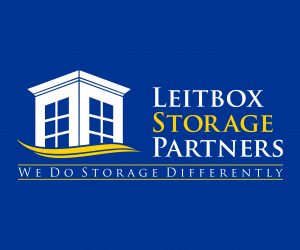Velocity Ledger to Launch Blockchain Trading Platform for Currently Nontraded Securities, Part II

In this article, we further explore the functioning and potential that the blockchain-enabled distributed ledger trading platform called Velocity Ledger (“VL”) brings to the nontraded REIT industry specifically and the broader market for alternative investments generally. (Please see Part I for an introduction to this platform via the interview with Jon Haahr and Julian Jacobson.) Initially, Velocity Ledger will make possible the trading of previously illiquid nontraded REIT shares in a low-cost, competitive, transparent system with market-based pricing and almost instantaneous settlement. Investment advisors and independent broker dealers will find it increasingly attractive to transact their client’s purchases and sales of shares in these REITs (as well as BDCs, DSTs and other real estate securities) on the VL platform.
Getting Started
The Delaware Board of Trade (“DBOT”) is the venue that makes possible the trading of securities, including tokenized real estate securities, using blockchain based distributed ledger technology, the same technology that underpins the digital currency, Bitcoin. It is an electronic platform that matches buyers and sellers. DBOT is regulated as an “alternative trading system” by the Congressionally-authorized, yet privately operated, Financial Industry Regulatory Authority, or FINRA. VL will utilize DBOT to launch its platform.
VL has entered into a strategic partnership with the DBOT Alternative Trading System (ATS) in the real estate sector. DBOT currently employs Fundamental Interactions’ blockchain trading platform to create a crowd funding portal for new issuance and secondary trading of OTC securities products – the same technology that underpins VL. DBOT ATS will list and support real estate securities and properties tokenized on VL and make them available for trading and settlement across both platforms.
An initial coin offering (“ICO”) by Velocity Ledger is coming soon. This offering is for “utility tokens” which represent “network credits” for purchasing future use of platform services such as secondary trading and settlement services on DBOT. After the token sale, all contributors will receive their utility tokens in a VL wallet inside the VL network. They will move between internally managed wallets on the VL blockchain. Access to the trading platform will require a client to hold a minimum VL token/coin balance. Fees will be assessed and collected as trades are executed. Fees will adjust based upon utilization of the network. On a percentage basis, fees will likely decline as network usage increases. Firms providing liquidity will be paid VL tokens upon trade executions.
The list of parties who will transact on the VL platform includes but is not limited to: sponsors of NT REITs, BDCs and DSTs, financial advisory firms, investment banks, registered market makers, institutional funds, opportunity funds and retail investors.
Velocity Ledger’s alpha version is fully functional. Proceeds from the sale of the utility tokens will be used for obtaining regulatory approvals, next phase technology build-out, operations to onboard key market participants/clients as well as establishing a principal trading/liquidity platform. Use of funds will include marketing, staffing and working capital as well.
Next Steps
Following the ICO utility token sale, VL will be used as a securities ledger where real estate sponsors can “tokenize” (put on the blockchain) each security/asset and make it tradeable on the DBOT. This will facilitate future ownership and investment by creating liquidity and pricing transparency for peer-to-peer transfers, most of which will be between financial advisors or program sponsors on behalf of clients. VL’s capabilities aim to fundamentally alter the secondary markets, to reshape the historically dislocated network of real estate sponsors, inter-dealer brokers and registered investment advisors into a dynamic competitively traded marketplace with reduced frictional costs and market-based pricing.
VL is the first blockchain-based securities ledger that is integrated with a Centralized Limit Order Book (“CLOB”) where customer orders are matched to provide equal access, transparency and liquidity to its participants. It enables peer-to-peer direct settlement between buyers and sellers. The trading interface is browser-based and provides users with functional trading access to the marketplace, in real time. Users can view, analyze and trade in the market with a variety of screens as well as keep track of balances, positions and trades.
A CLOB is a trading method used by most exchanges globally. It is a transparent system that matches customer orders (e.g. bids and offers) on a ‘price time priority’ basis. The highest (“best”) bid order and the lowest (“cheapest”) offer order constitutes the best market or “the touch” in a given security or swap contract. Customers can routinely cross the bid/ask spread to effect low cost execution. They also can see market depth or the “stack” in which customers can view bid orders for various sizes and prices on one side and offer orders at various sizes and prices on the other side. The CLOB is, by definition, fully transparent, real-time, anonymous and low cost in execution.
In the CLOB model, customers can trade directly with dealers, dealers can trade with other dealers, and importantly, customers can trade directly with other customers anonymously. VL will seek to expand its block-chain enabled platform’s CLOB and ledger globally to interconnected market centers.
Settlement, Smart Contracts and Distributions
VL is a books and record system for the issuer, a database that records all relevant information for any given security, such as the common stock issued by a nontraded REIT. A wallet on the ledger represents a particular owner, and a token represents some fraction of the total equity in the security. The ledger records in real time the owners of the securities and connects to the custodians who hold cash and securities on behalf of the owners. Smart contracts are applications that can, for example, use the ledger to move tokens representing cash and securities to make periodic distributions to shareholders.
The settlement process controls and coordinates the settling of participant (institutions, broker-dealers, customers) wallets on the platform. Smart contracts use the exchange reference ID generated by a matched trade and combine the trade information with a single execution report with a blockchain “Hash” that will be publicly visible on the trade. Trade execution data collected by the CLOB is combined with blockchain ledger records to generate smart contracts for settlement. Key information such as the firm or company, the client’s ID, the account number and wallet address, specific trade data such as the ticker of the asset and the price, will be written to the blockchain and cannot be edited. The platform uses a cryptographic system, a “private key” known only to the owner, which facilitates the authentication and integrity of the data.
Learn More
You can read more about Velocity Ledger at www.velocityledger.com, Fundamental Interactions at www.finteractions.com, the Delaware Board of Trade at www.dbottrading.com, and Silver Portal Capital at www.silverportalcapital.com.










